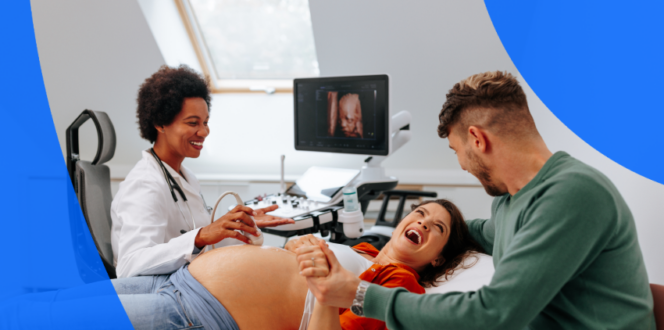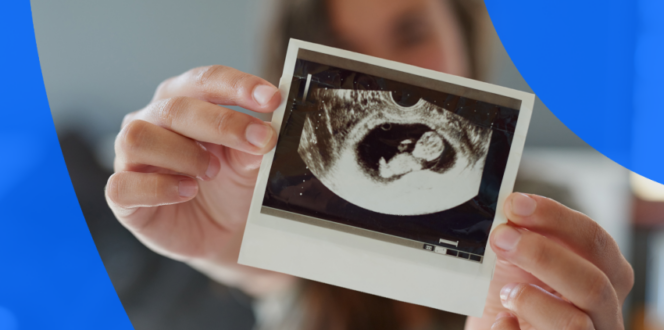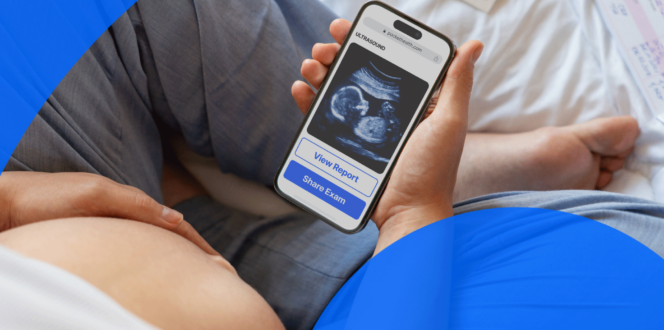13-Weeks Pregnant: What to Expect from Your Ultrasound Scan
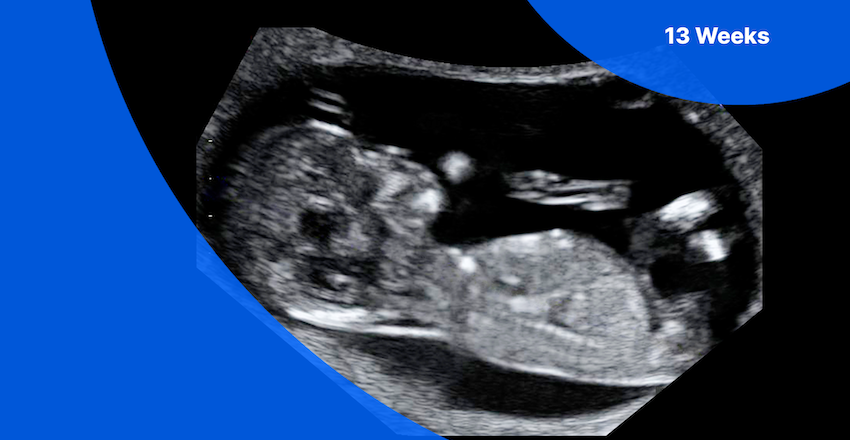
By thirteen weeks, you are officially entering the second trimester of your pregnancy. Your baby is roughly the size of a lemon and anatomical development is progressing rapidly. Your doctor may have you scheduled for an ultrasound, in which case it may be helpful to know what to expect.
This article will cover how to prepare for your ultrasound appointment, explain what a nuchal translucency screening is and discuss the specific information revealed in a 13-week ultrasound scan.
Why get an ultrasound at 13 weeks pregnant?
Some patients don’t have a 13-week sonogram. They may have already had an early ultrasound to confirm viability and dating so they may simply wait until their fetal anatomy scan at 18 to 20 weeks.
Usually, a 13-week ultrasound is done to assess growth, factor due dates and to perform a nuchal translucency screening to check for chromosomal abnormalities. This scan is optional, so some patients skip it entirely. For those who do have a 13-week ultrasound, this guide will discuss what to expect.
What can you see on a 13-week sonogram?
If you’re getting a 13 weeks pregnant ultrasound, you’re probably wondering what the scan will show. The technician will be screening for a variety of factors, including:
- The size of the fetus and the due date: Measuring crown to rump length can help determine your due date. Other fetal biometrics will be measured and multiple fetuses can also be detected.
- Organ development: Evaluation of the organs, including sex organs (to an extent), will be evident on this scan.
- Bone tissue formation and head/body proportions: Your technician will be able to see more defined and proportionate arms, legs and head sizes.
- Structural irregularities: This evaluates that fetal anatomy is growing as expected.
- Fetal heart rate and blood flows: Your doctor will be able to track your baby’s heart rate to ensure it falls within the expected range and that vessels are developing normally.
- Sufficient amniotic fluid and placenta health: Adequate amniotic fluid levels and placenta health are important factors for healthy development.
- The condition of your cervix, ovaries and uterus: As your pregnancy continues, your body will change to prepare for delivery.
- Discerning the source of vaginal bleeding (if applicable): Vaginal bleeding is not always cause for concern, but an ultrasound can help determine the cause.
- Genetic anomalies: Nuchal translucency screening assesses the risk of chromosomal anomalies.
Can you tell gender at 13 weeks on an ultrasound?
Though sometimes used interchangeably, sex and gender mean different things. Sex refers to physical characteristics and attributes, while gender refers to the social roles individuals use to identify themselves in the world. Predictions of the sex of your fetus at 13 weeks are fairly accurate, although it’s more common to wait until about midway through the second trimester.
Keep in mind that your practitioner will likely send you for a full anatomy scan around the 20-week mark, but you can find out earlier if you are opting into additional diagnostic testing, such as NIPT, CVS or amniocentesis. Meanwhile, here is how your scan may reveal your baby’s sex.
Nub theory 13 weeks: What it is and how to identify baby gender from scan report
At 13 weeks, your practitioner may be able to see the genital tubercle or the very beginnings of genitalia forming. This is called the nub theory and it predicts sex by examining the angle of the tubercle. A nub angled over 30 degrees relative to the fetal spine means it is highly likely to be male. If the nub is below 30 degrees or pointing down or out, it is highly likely to be female..
13 week ultrasound gender accuracy
By 13 weeks the nub theory is over 98% accurate in predicting sex. Keep in mind the baby needs to be at the right angle to get a clear view of this anatomy. If the fetus is in the wrong position, you may have to wait to learn the sex until a later ultrasound.
What is the size of your fetus at 13-weeks?
This will likely be the last time the fetus is measured using crown rump length, which will be about 2.9 inches (7.4 cm). The body and head will become more proportionate and you may even be able to see the fetus yawn, suck its thumb, stretch and make faces!
Every part of your baby’s body is becoming more defined, and eyelashes, fingernails and hair are also starting to grow. Major organs, like the kidney system, are also developing and becoming functional. Although you won’t be able to see it on your ultrasound, your baby will be developing vocal chords, as well as ovaries or testes.
Getting a nuchal translucency scan at 13 weeks
A nuchal translucency (NT) screening measures the area of fluid buildup at the back of the baby’s neck. Some fluid is expected, but too much might indicate a potential risk of chromosomal anomalies like Trisomy 21 (i.e., Down syndrome). It is often one of several routine prenatal screenings during the first trimester. But keep in mind that it is a screening test, not a diagnosis.
Also, this screening should be scheduled between 11 weeks and 13 weeks gestation. You can have it as late as thirteen weeks and six days, but by week 14, the fluid will start to be absorbed by the fetus and it won’t be a useful measurement anymore.
What is the normal range for nuchal translucency at 13 weeks?
The normal range for nuchal translucency at 13 weeks is below 3mm. Measurements above 3mm may warrant further testing.
Getting your NT scan results
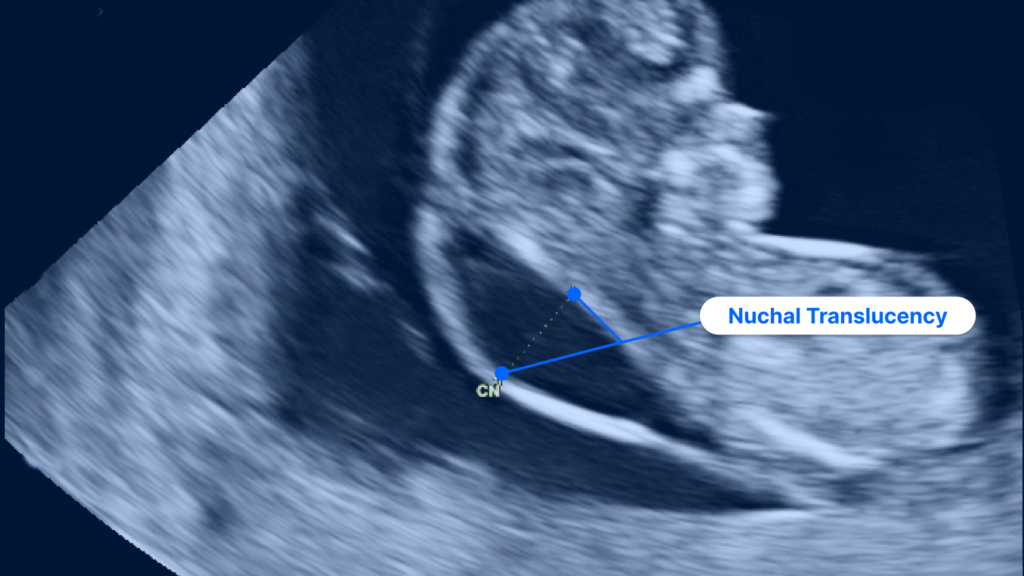
Pregnancy ultrasound showing increased nuchal translucency
If your NT ultrasound comes back positive or inconclusive and you want more information, your practitioner may order further screening tests. For instance, noninvasive prenatal testing (NIPT) is a highly accurate genetic screening based on your blood sample, which will also contain fragments of your baby’s DNA. This DNA can indicate the fetus’ genetic makeup, including chromosomal anomalies. NIPT identifies the risk of Down syndrome, Edwards syndrome and other chromosomal abnormalities.
After screening tests come diagnostic tests that provide diagnoses. It is your decision if you want to proceed with further testing. With your consent, your physician may order:
- Chorionic villus sampling (CVS): A small sample of tissue is removed from the placenta for genetic testing and analysis. CVS tests for Down syndrome, cystic fibrosis, sickle cell disease and other conditions, but does not test for birth defects like heart problems.
- Amniocentesis: A sample of amniotic fluid is withdrawn and sent to the lab for testing. Keep in mind that amniocentesis is normally performed after 15 weeks. Amniocentesis can test for chromosomal and genetic conditions like Down syndrome, or certain genetic conditions like sickle cell disease or cystic fibrosis. The test can also indicate neural tube defects like spina bifida, which CVS cannot test for, and Rh disease.
What to expect at a 13-weeks pregnant ultrasound appointment
During an ultrasound, a sonographer or trained technician uses a hand-held device called a transducer to make sound waves (too quiet for human ears to hear) that travel painlessly through your body to your baby. An ultrasound machine can detect the sound waves and use them to create an image of your baby’s exact size, shape and position.
Unlike X-rays, ultrasounds don’t use radiation to capture images and are safe when performed by a trained ultrasound technician. At your 13-week scan, you will most likely receive a transabdominal ultrasound. During this scan, the sonographer will place gel on your abdomen and slide a transducer across the gel to capture detailed images of your baby, your womb and cervix.
Here are some steps you can take to prepare for your 13-week ultrasound:
- Bring your requisition: If they don’t already have it, the imaging facility may find this useful. Also bring your I.D. and health card.
- Book your appointment when your baby is more active: This allows the ultrasound to capture as many images as possible. Drinking a cold sugary beverage right before your appointment can also make your baby more active.
- Arrive with a full bladder: Soundwaves travel more easily through liquid, so a full bladder helps capture better images.
- Bring a support person: This is optional, as many patients choose to go alone. If you want someone with you, check ahead with the imaging clinic, as some facilities may have restrictions.
- Drink lots of water in the week leading up to your ultrasound: Staying hydrated helps keep amniotic fluid clear, allowing for better images.
- Wear loose/comfortable clothing: Wear something easy to take off and put on.
Questions to ask during and after your ultrasound appointment
The ultrasound technician can’t legally answer questions about your baby at 13-weeks ultrasound scans or any other sonogram appointments. However, they can answer questions about your appointment and the procedure itself. They will prepare images, which are reviewed by a radiologist. The radiologist then prepares a report for your practitioner to discuss with you at your follow-up appointment.
Questions to ask the ultrasound technician before and during your appointment:
- How long will the appointment last?
- Can I have someone in the room with me?
- Can I take photos or videos of my own during the appointment?
- How will you share the results with my healthcare team, and when?
Your healthcare practitioner will go over the results of your ultrasound with you at your follow-up appointment. The scan provides insight into the health and development of the fetus and your own health, so don’t hesitate to ask questions.
Questions to ask your practitioner at your follow-up appointment:
- What are the signs of a healthy pregnancy at 13 weeks? Do I fit those markers?
- Is there any change to my due date?
- How big is the fetus? What’s the crown rump length?
- Is the heartbeat in the normal range?
- What were the results of the nuchal translucency test?
- Can you tell on a 13 week ultrasound, girl vs boy sex indicators?
- Where is the baby located at 13 weeks?
How soon can I get my 13-week pregnancy ultrasound images and report?
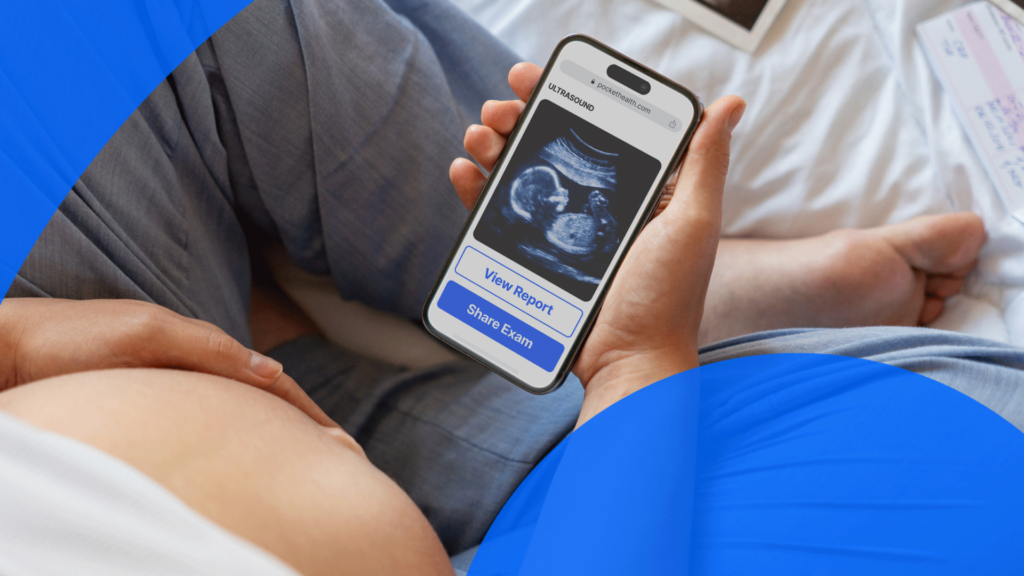
Patient viewing their pregnancy ultrasound report on PocketHealth
You’re probably eager to receive your 13-week fetus pictures as soon as possible. Many patients will get their results at their follow-up appointment with their doctor. With PocketHealth, you can quickly and easily access and share your pregnancy ultrasound images and report–often before your follow-up appointment. You can securely access and store your imaging information in one place while also being able to easily share ultrasound scans with family and friends.
Pregnancy ultrasound terminology can be complicated, but PocketHealth Report Reader is there to help. Report Reader makes it easier to understand terms in your ultrasound report and feel more prepared and confident when speaking to your pregnancy care practitioner.
Moving into your second trimester with confidence
Your 13 weeks pregnant ultrasound provides you and your practitioner with important information about your and your baby’s health and can determine whether you may need additional testing. MyCare Navigator is especially well-suited to helping you form relevant, personalized questions based on your own results. It also has a follow-up detector to make sure you bring up any suggested next steps with your doctor.
Understanding what’s happening inside your body and how your baby is growing can give you confidence in how your pregnancy is progressing into the second trimester. Learn more about how to use PocketHealth to access and share your pregnancy ultrasound records.
Published: July 27, 2023
Trusted by more than 800+ hospitals and clinics.

















